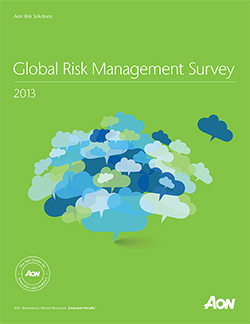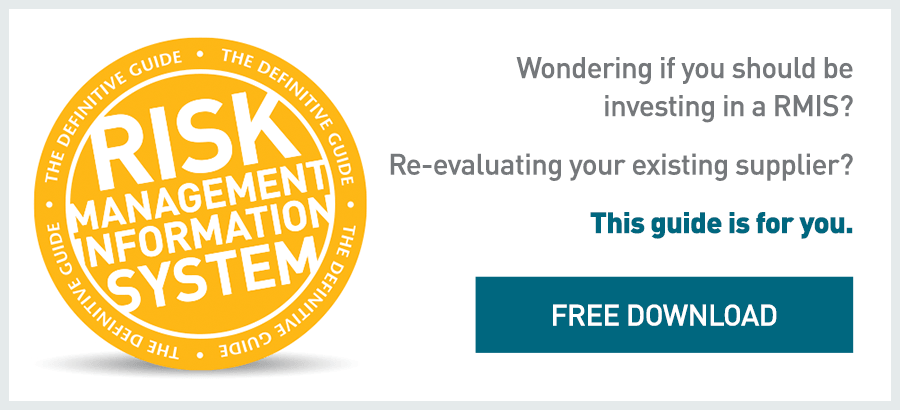
Ive just begun digging in to Aons 2013 Global Risk Management Survey, a web-based biennial research report, and I recommend it highly to all risk managers. The surveys findings on how organizations look at total cost of risk (TCOR) immediately caught my attention. The importance of tracking and managing TCOR was the focus of my previous blog post; the 2013 Global Risk Management Survey (GRMS) supports the proposition that, although most organizations understand the value of measuring TCOR, most companies struggle to get a handle on this essential function.
This passage from page 8 of the GRMS nicely summarizes the conflicted approach that many organizations take when measuring TCOR:
The majority of respondents in the 2013 survey consider lowering total cost of risk or TCOR as one of the top benefits of investing in risk management. However, no more than 33 percent say they have tracked and managed all components of their TCOR, down from 39 percent in 2011.
In working with risk managers to assess their integrated risk management software needs, I've learned that pulling together an accurate, comprehensive TCOR report can be challenging especially when a risk manager is asked to do so at a moments notice. With so much emphasis placed on TCOR, why is it so difficult for risk managers to get their hands around it?
Diagnosis: The challenges of measuring TCOR
First, lets examine the elements of total cost of risk. TCOR comprises retained losses, policy premiums and administrative costs, including spending on loss-control initiatives. That might seem like a short list, but the amount of data that goes into these elements can be vast. Compiling this information can be daunting for many reasons, including:
- Current and historic claim data residing in several TPA and carrier systems
- Policy details residing in paper files or with multiple brokers
- Invoices paid to vendors unknown or inaccessible
- Dozens of spreadsheets residing in different locations
As a result, the exercise is usually pursued only once a year and is oftentimes incomplete. Clients have tackled these issues by consolidating this information into a risk management information system (RMIS software) and automating as much data collection as possible. For example, historic and ongoing claim data can be automatically loaded from TPA and carrier systems. All other data is compiled in electronic format, loaded and maintained in the RMIS going forward.
Although implementing a RMIS is a big piece of compiling risk costs, our most successful clients have procedures in place to record ALL risk costs as they are incurred. An ongoing plan for recording all TCOR transactions in a timely fashion is critical to having your organization's TCOR at your fingertips.
Solution: Measures of total cost of risk become answers to c-level questions
Access to your organization's past, present and potentially future measures of TCOR are critical for answering c-level strategic questions, including:
- Given the organization's growth potential, does our current risk financing strategy make sense?
- Is a potential merger or acquisition worth the risk?
- How do we compare with our peers from a cost-of-risk perspective?
- Does it make sense to implement loss-control initiatives? Where should those controls focus?
- What is the risk budget for the coming year? How can it be better utilized?
- What are the financial consequences of raising or lowering the organization's risk retention level?
- Are our insurers charging a reasonable premium?
- Are the reserves for prior years losses reasonable? Too low? Too high?
This is just a sampling of the types of strategic questions risk managers are either asked to answer directly or provide critical input to on a regular basis. As you can see, these aren't always once-a-year issues. Answering these types of questions quickly and with confidence raises risk management's visibility with the c-suite. In addition, an accurate measure of the organization's TCOR allows the risk manager to be proactive and make strategic proposals to the board.
How: Know all the elements, all the time
So, given the importance of accurate, timely TCOR data presented in a format that's easily digested by both risk management and c-suite executives, how does one go about ensuring this data is available at all times?
Unfortunately, the answer isn't all that simple and will vary from organization to organization. The first step is knowing ALL the elements of your organization's TCOR. The second is aggregating that data. But the third may not be as obvious and is often why this data oftentimes isn't readily available: implementing processes and a system to ensure that the data is kept up to date, can be trusted, and is easily reportable. Upcoming posts will discuss the third step and ways to look at the data to answer some of the questions posited above and extract insights to facilitate your organization's strategic planning.
Jay Thierauf, ARM, is a solutions consultant with Aon eSolutions. Jay is based in Chicago.












